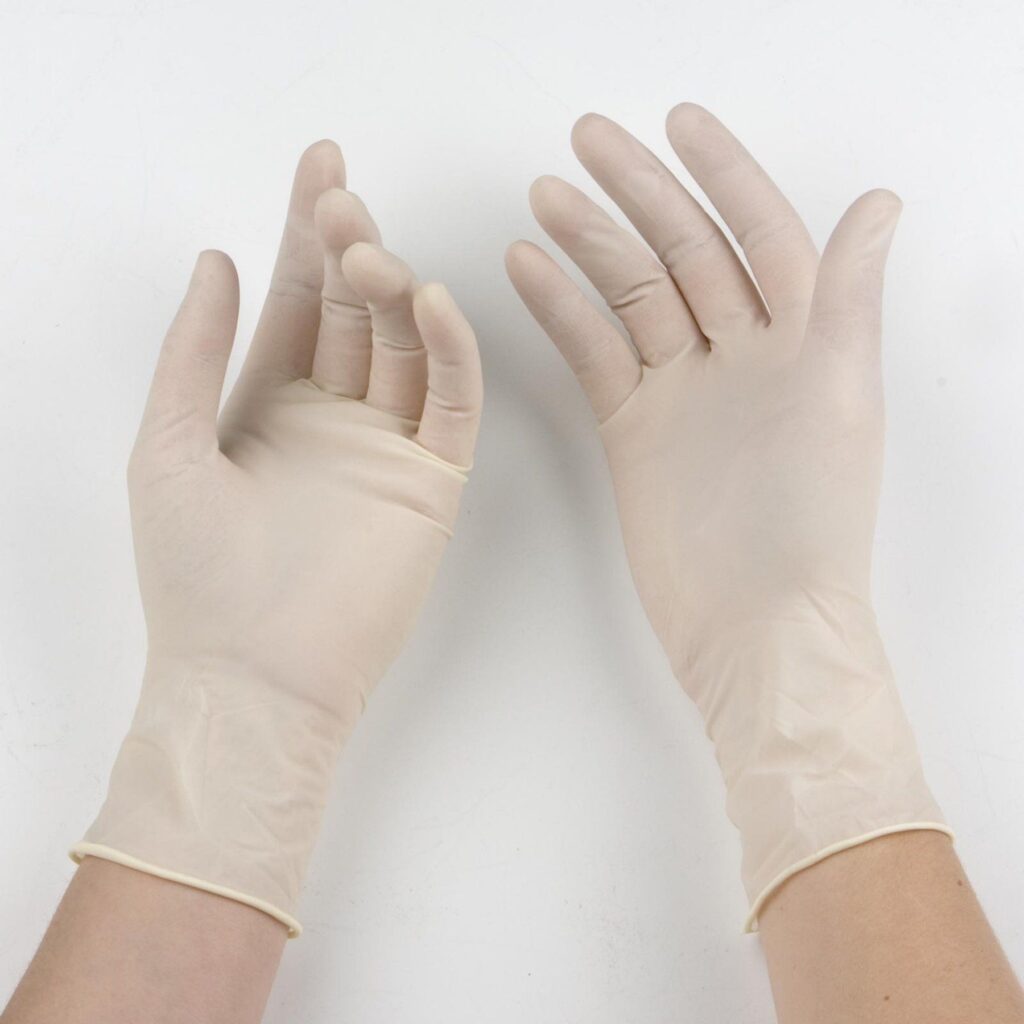Disposable gloves come in various materials, each with unique characteristics. Here’s a comparison of disposable nitrile gloves, disposable latex gloves, and disposable PVC gloves:
1. Disposable Nitrile Gloves

Material:
- Made from synthetic rubber (nitrile butadiene rubber).
Features:
- Allergy-Friendly: Latex-free, reducing the risk of allergic reactions.
- Durability: High puncture resistance compared to latex and PVC.
- Chemical Resistance: Excellent resistance to chemicals, oils, and solvents.
- Comfort: Good fit and flexibility, though slightly less than latex.
Applications:
- Medical and dental fields
- Laboratory and pharmaceutical work
- Food handling and processing
- Industrial and automotive settings
2. Disposable Latex Gloves

Material:
- Made from natural rubber latex.
Features:
- Fit and Comfort: Excellent elasticity, providing a snug and comfortable fit with high tactile sensitivity.
- Biodegradable: Environmentally friendly, as they are made from natural materials.
- Durability: Good puncture resistance, but can be weakened by exposure to oils and solvents.
- Allergic Reactions: Can cause latex allergies in some individuals.
Applications:
- Medical and dental fields
- Laboratory work
- Food handling (if not allergic)
- General purpose use
3. Disposable PVC Gloves

Material:
- Made from polyvinyl chloride (PVC).
Features:
- Cost-Effective: Generally cheaper than nitrile and latex gloves.
- Chemical Resistance: Moderate resistance to chemicals and acids, but less effective against organic solvents.
- Allergy-Friendly: Latex-free, reducing the risk of allergic reactions.
- Durability: Less durable and lower puncture resistance compared to nitrile and latex.
- Comfort: Less flexibility and fit compared to nitrile and latex.
Applications:
- Food handling and preparation
- General cleaning and janitorial work
- Light manufacturing and assembly
- Medical use (non-critical applications)
Choosing the Right Type of Glove:
- Nitrile Gloves: Best for tasks requiring high durability and chemical resistance, suitable for those with latex allergies.
- Latex Gloves: Ideal for tasks requiring a high level of sensitivity and dexterity, provided there are no latex allergies.
- PVC Gloves: Suitable for low-risk tasks where cost is a significant factor and minimal durability is required.

